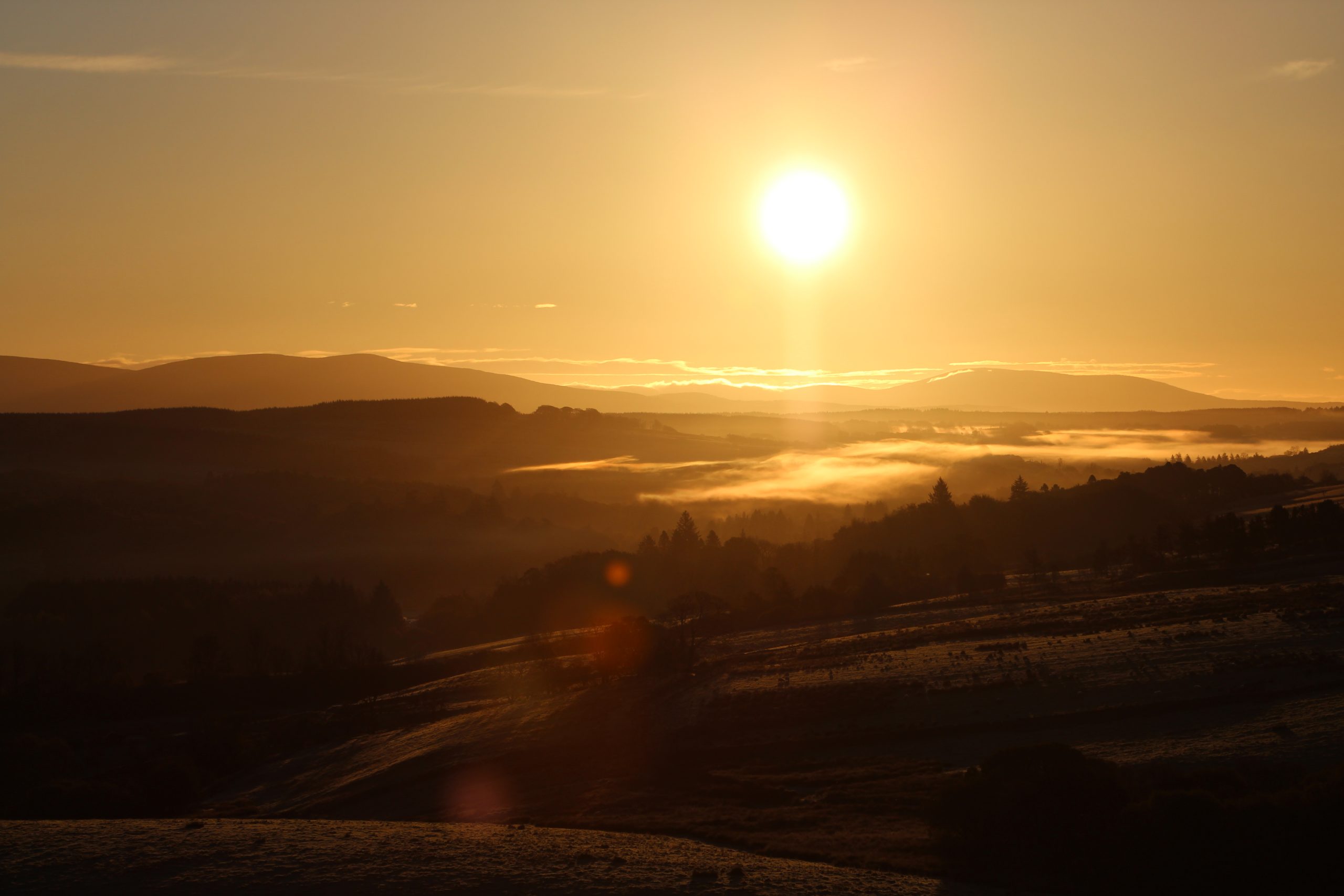
Pinwherry & Pinmore
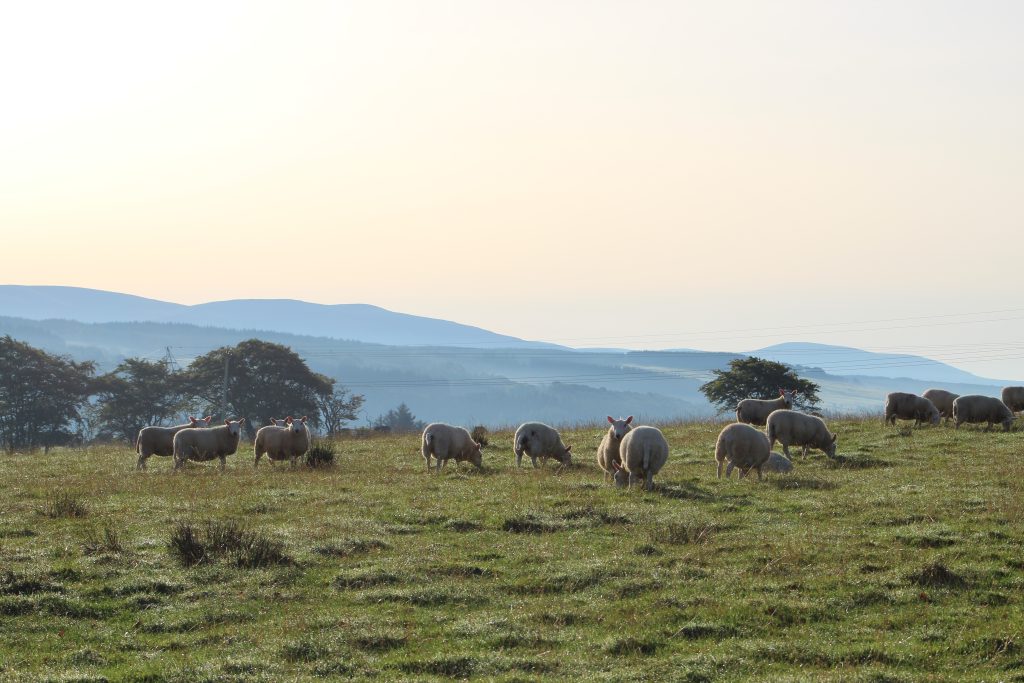
Two tiny hamlets in rural South Ayrshire make up the joint Biosphere Community of Pinwherry and Pinmore.
A few miles south of Girvan and the Biosphere’s sweeping western coast, ‘the Pins’ sit nestled in the scenic Stinchar Valley among the breathtaking beauty of historic farms, ancient forests, and the rivers and burns that criss-cross our UNESCO Biosphere. In Pinwherry and Pinmore visitors will find the warm embrace of a community that is passionate about making life better for people and nature, and celebrating the joys of rural living.
Heritage & Culture
To say Pinwherry and Pinmore are as old as the hills is no exaggeration. The history of this area starts as far back as the dawn of early civilisation. In Pinmore, standing guard over the Assel Valley, is Dinvin Motte, which dates back to the Iron Age. The origins of the name ‘Dinvin’ are thought to derive from dun fionn, meaning ‘white fort’ in Gaelic. Pinmore was the name given to the little train station (now closed) around which the community developed, and in Gaelic is peinn mor meaning ‘big hillside’.
The name Pinwherry means ‘the hill in the hollow, surrounded by hills, where the waters meet’. These waters are the Stinchar and the Duisk.
The first houses in Pinwherry grew up round the ancient keep of the Kennedy clan, known as Pinwherry Castle. South of the village lived the local builder, Mr McQuaker of Sixpence, who was responsible for the building of the old Pinwherry primary school. At the north end of Pinwherry is Daljarrock, meaning ‘field of the oaks’. Daljarrock House was also a stronghold of the Kennedy family.
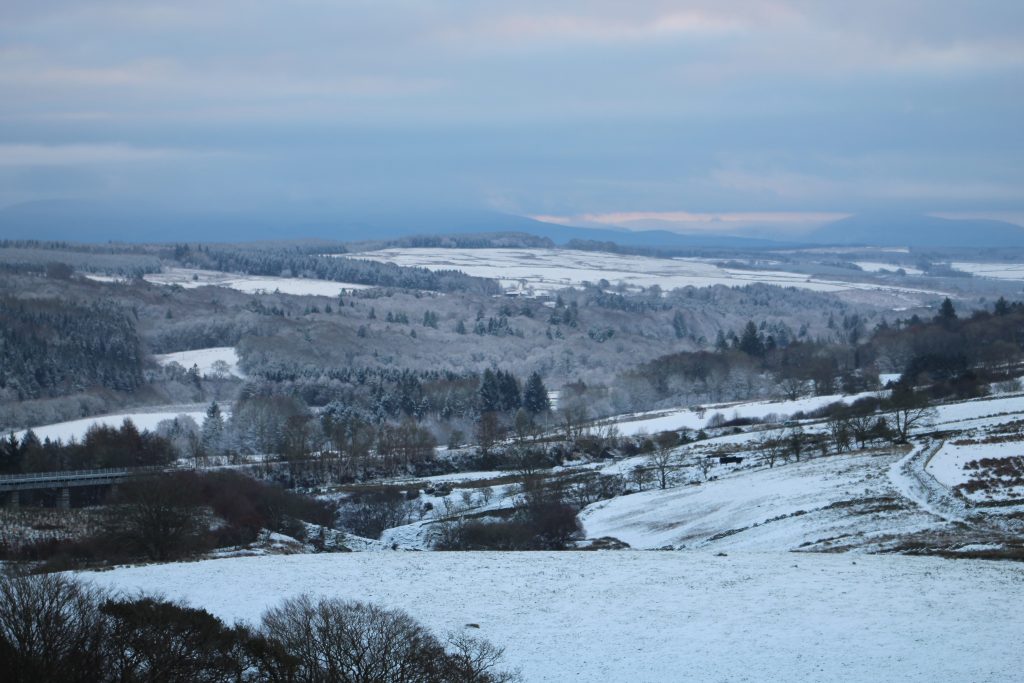
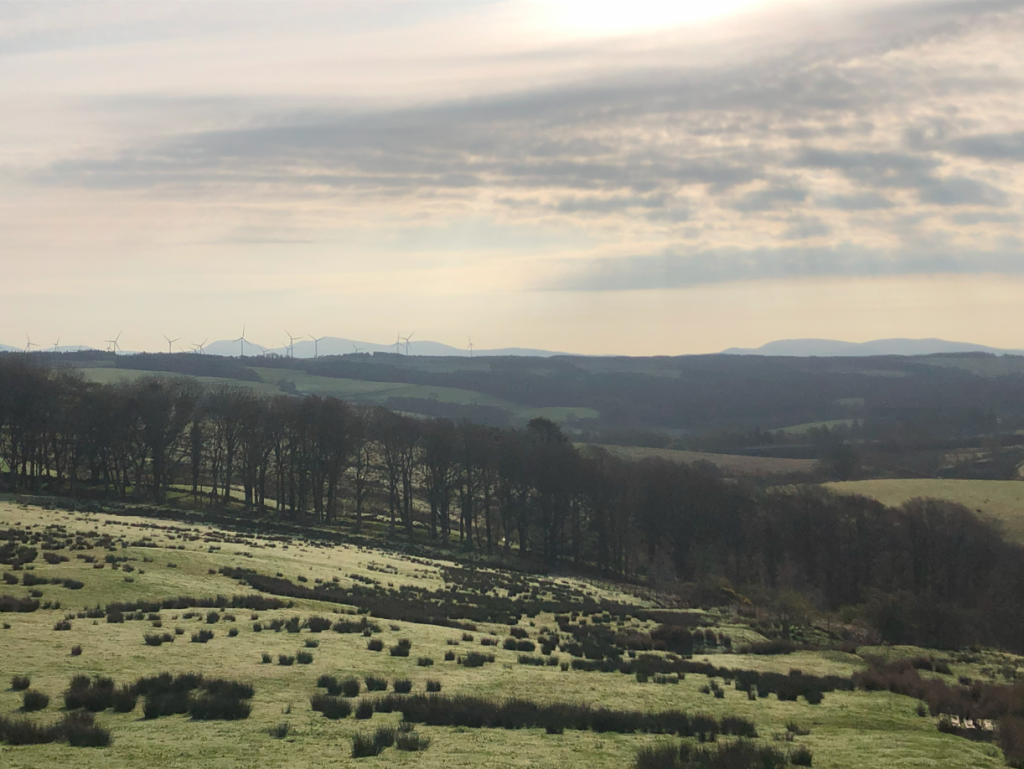
In the 1950s the centre of Pinwherry was a busy little place – indeed it was known as “the land of milk and honey”, with the creamery on the one side of the road, and Drumspillan House on the other with its rows of beehives.
In 1629 John Snell was born, who would grow up to become a scholar, soldier and lawyer. His memorial at Almont, Pinwherry, was raised in 1915. John Snell was seal-bearer to Charles II and died in Oxford in 1679, bequeathing the Snell Bursary to Balliol College, Oxford, to enable Scottish students to be educated there.
High on the farmlands of Docherneil, in the part known as Glake, is a spear-shaped standing stone (stane) which dates back to 2000 BC. ‘Glake’ means ‘the ripple-shaped tombstone’; the stone has cup-and-ring markings and, it is believed, functioned as an ancient calendar. On Midsummer’s day, the shadow of the stone points directly to Knockdolian Hill.
Wildlife & Natural Beauty
The area boasts dark skies and lovely sunsets, with views to the Merrick and the range of the Awful Hand, at the heart of our UNESCO Biosphere. There are lots of local walking routes, such as the Farden Walk, Craig Brae, Muck Water, Bargain Hill, and the walk to Pinmore Church which is full of wildlife. The forestry at Knockbain is habitat to red squirrels and other woodlands attract jays, foxes, bats, deer, stoats (ermine) and weasels. Gardens in the area attract sparrows, blue tits, robins, blackbirds, thrushes and the sparrowhawk. House martins arrive each spring to nest on buildings.
There are many farms with cows and sheep, and the farmland is home to brown hares, pheasants, crows, and buzzards. Local moorland attracts adders, lizards, short-eared owls and peregrine falcons.
Fish such as salmon, trout, and pike live in the rivers and lochs, and wetlands are home to frogs, toads, dippers and herons.
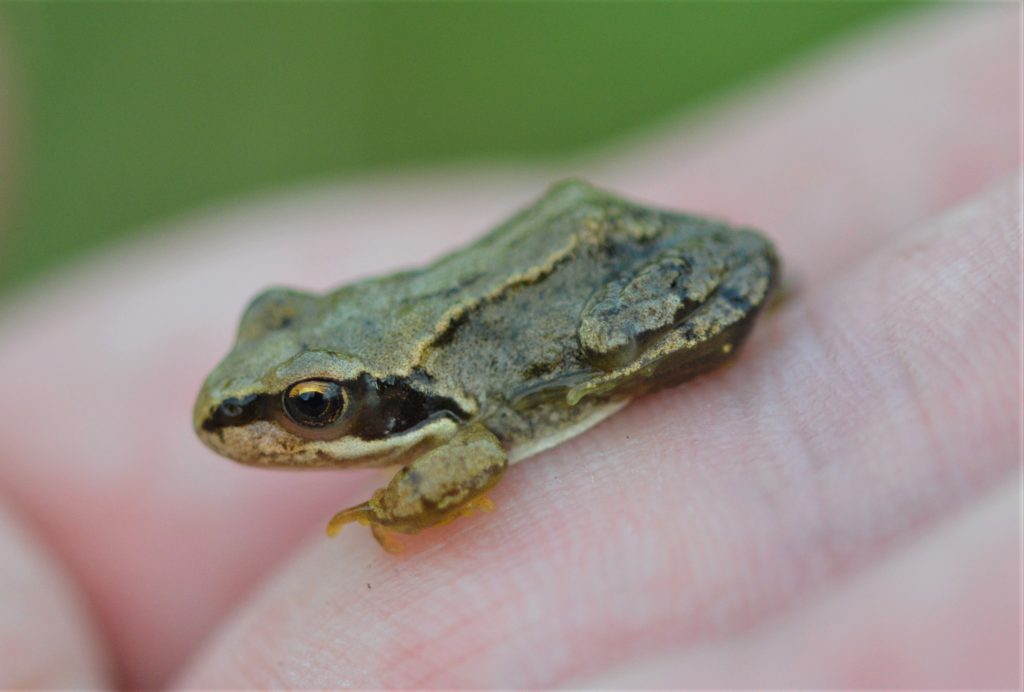
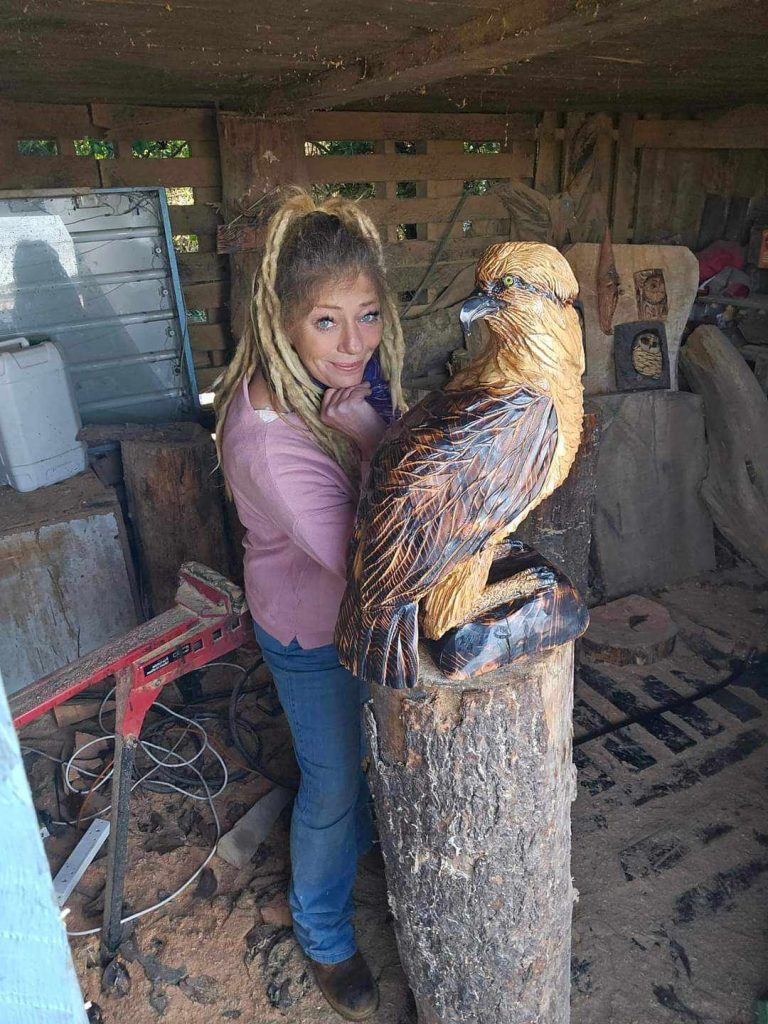
Local Produce
Pinwherry, Pinmore, and the surrounding area are not short of creatives, and visitors are easily able to take home a bespoke piece of art. Jamie MacDonald Sign & Artwork is a local decorative artist specialising in signwriting, whose works include a chancel ceiling in a local church, wall murals, upcycled vintage vehicles, and refurbished furniture. In Pinmore, a chainsaw artist uses local timber to create fantastically creative pieces; Sheila Laferla is inspired from the nature all around, carving sculptures of ospreys, owls, and robins, foxes, squirrels and rabbits, as well as many other creatures and designs.
With an abundance of farms in and around Pinwherry and Pinmore, the variety of local farming produce is impressive. From beef, venison and lamb for meat-lovers, to milk and milk products, the village enjoys the fruits of local farmers’ labour on the shelves of supermarkets around the country. Brochneil Farm is also just a short-drive away and is well known locally for delicious fresh eggs.
The community are always keen to come together to supply the village with homemade goods for events, and volunteers make a range of traybakes and buffet-style foods and bakes, as well as a variety of chutneys. Pinwherry & Pinmore Community Trust has set-up a community vegetable tunnel where people can help grow produce and acquire a variety of fresh fruit and vegetables to stock-up their fridges and fruit bowls.
Tranquility
The rural communities of Pinwherry and Pinmore are very quiet and peaceful, with lovely views and lots of walks. The historic pilrimage route, the Whithorn Way, passes through the area, and there are many local woodland trails, as well as the Kelly Walk and Poundland. The rivers are a draw for those seeking tranquility, with walks along the Water of Assel, the Stinchar and the Meeting, where the Duisk meets the Stinchar.
The natural beauty of the area is a source of tranquility, with wildlife such as hares, hedgehogs, deer, owls, buzzards and peregrine falcons. Seasonal changes with newborn lambs and spring bulbs appearing allow people to taking peace from witnessing the cycle of birth and life.
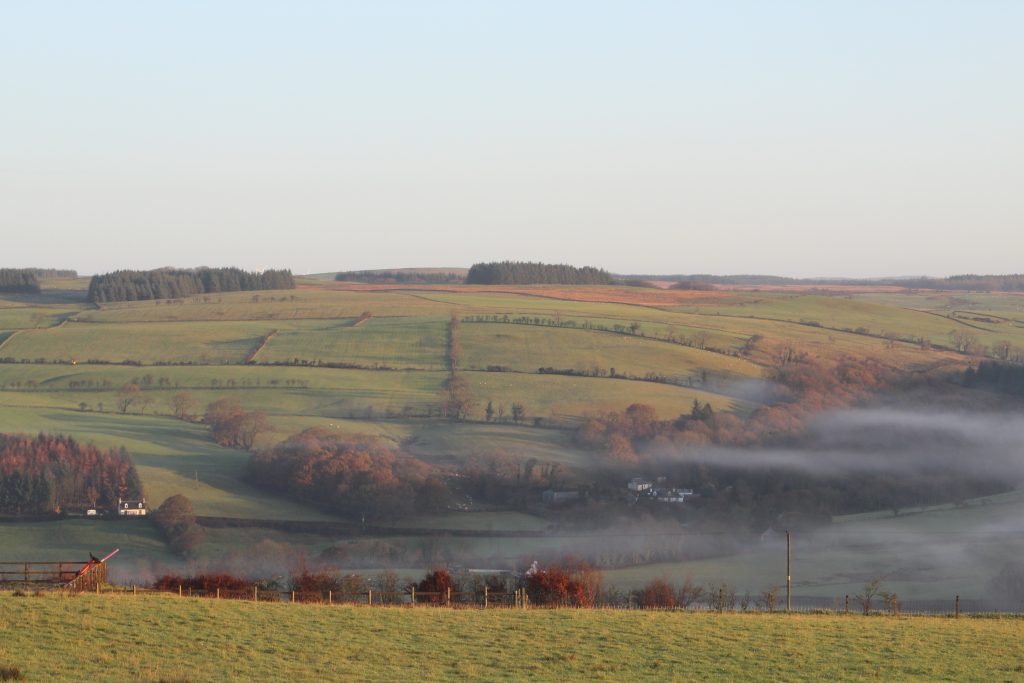
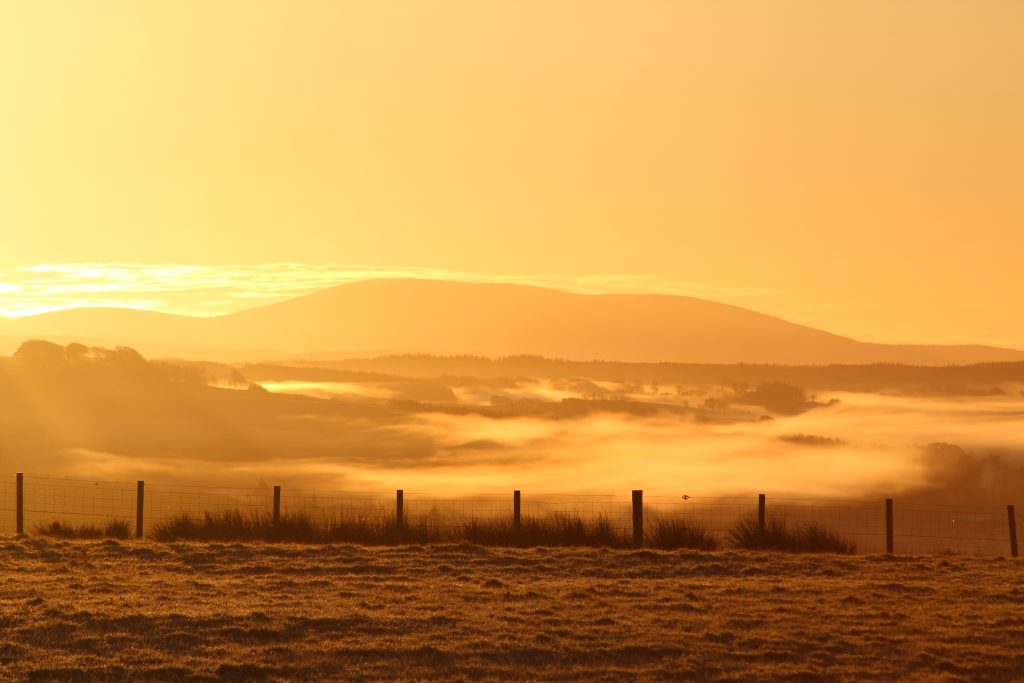
Inspiration
Pinwherry and Pinmore have a deep connection to the land and the generations of farmers who have worked the fields is truly inspiring. The community takes pride in the hard work and dedication that goes in to cultivating the land and caring for the animals. Inspiration can be found in the changing seasons, the satisfaction of seeing crops grow and thrive, and the cycles of nature. Witnessing the birth of new life among the roaming the fields produces an underlying feeling of joy and wonder as you navigate your way through the village.
“All best neighbours have four legs.”
The rolling open spaces galvanises the people of Pinwherry and Pinmore to come together as a community to make the most of what the village has to offer, taking inspiration from their love for the area and from close connections with family and friends nearby.

